
How to Use TECNOULAB MAX31865 RTD Platinum Resistance Temperature Detector Module PT100 - PT1000: Examples, Pinouts, and Specs
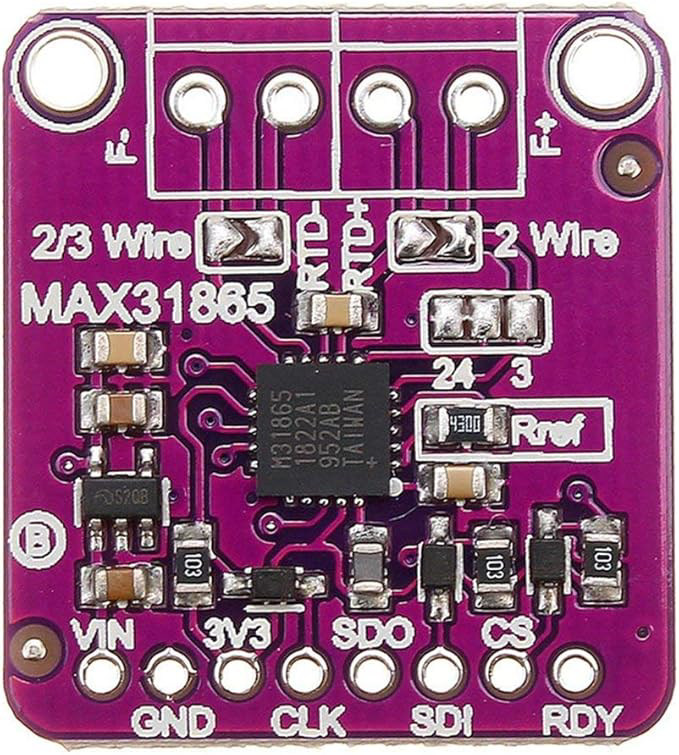
 Design with TECNOULAB MAX31865 RTD Platinum Resistance Temperature Detector Module PT100 - PT1000 in Cirkit Designer
Design with TECNOULAB MAX31865 RTD Platinum Resistance Temperature Detector Module PT100 - PT1000 in Cirkit DesignerIntroduction
The TECNOULAB MAX31865 RTD module is a precision temperature sensor designed to interface with PT100 or PT1000 resistance temperature detectors (RTDs). It utilizes the MAX31865 chip to convert the RTD's resistance into a digital signal, enabling accurate temperature measurements. This module is widely used in industrial, scientific, and environmental monitoring applications where precise temperature readings are critical.
Explore Projects Built with TECNOULAB MAX31865 RTD Platinum Resistance Temperature Detector Module PT100 - PT1000
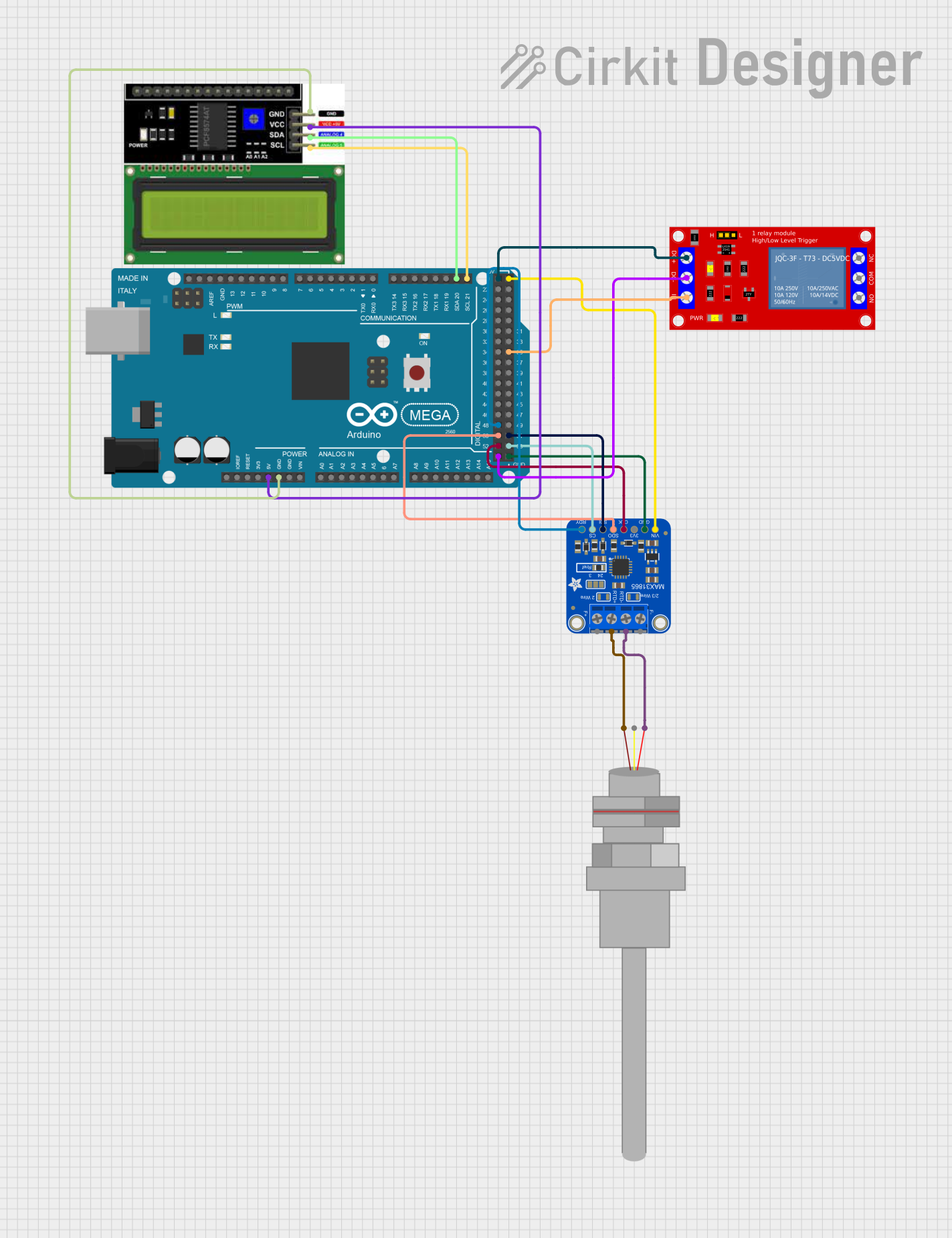
 Open Project in Cirkit Designer
Open Project in Cirkit Designer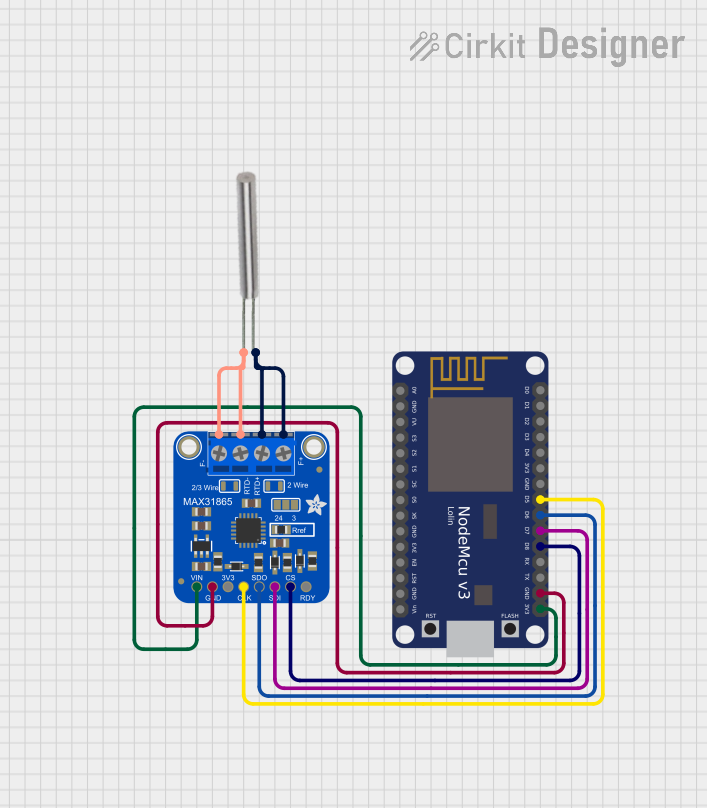
 Open Project in Cirkit Designer
Open Project in Cirkit Designer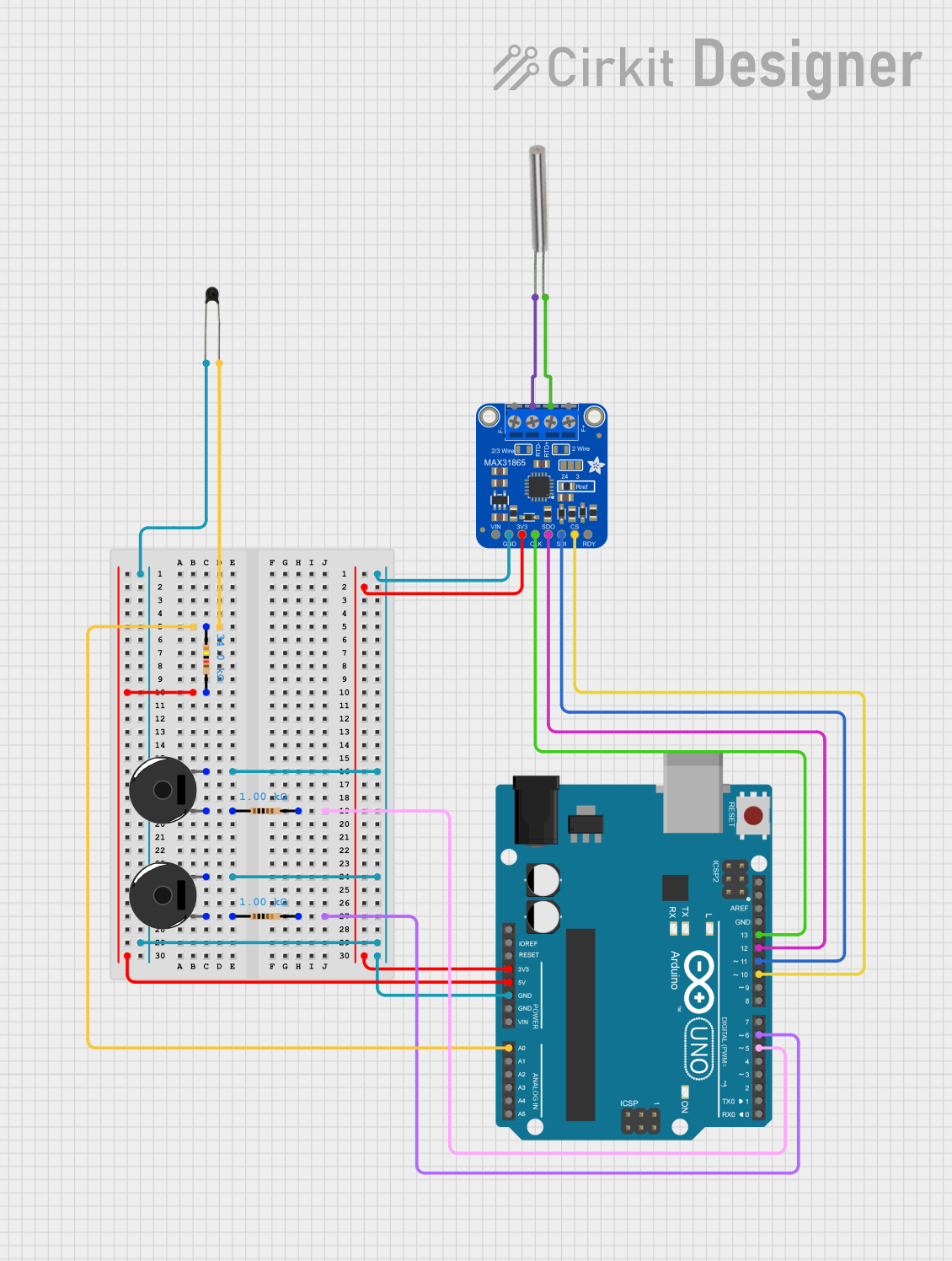
 Open Project in Cirkit Designer
Open Project in Cirkit Designer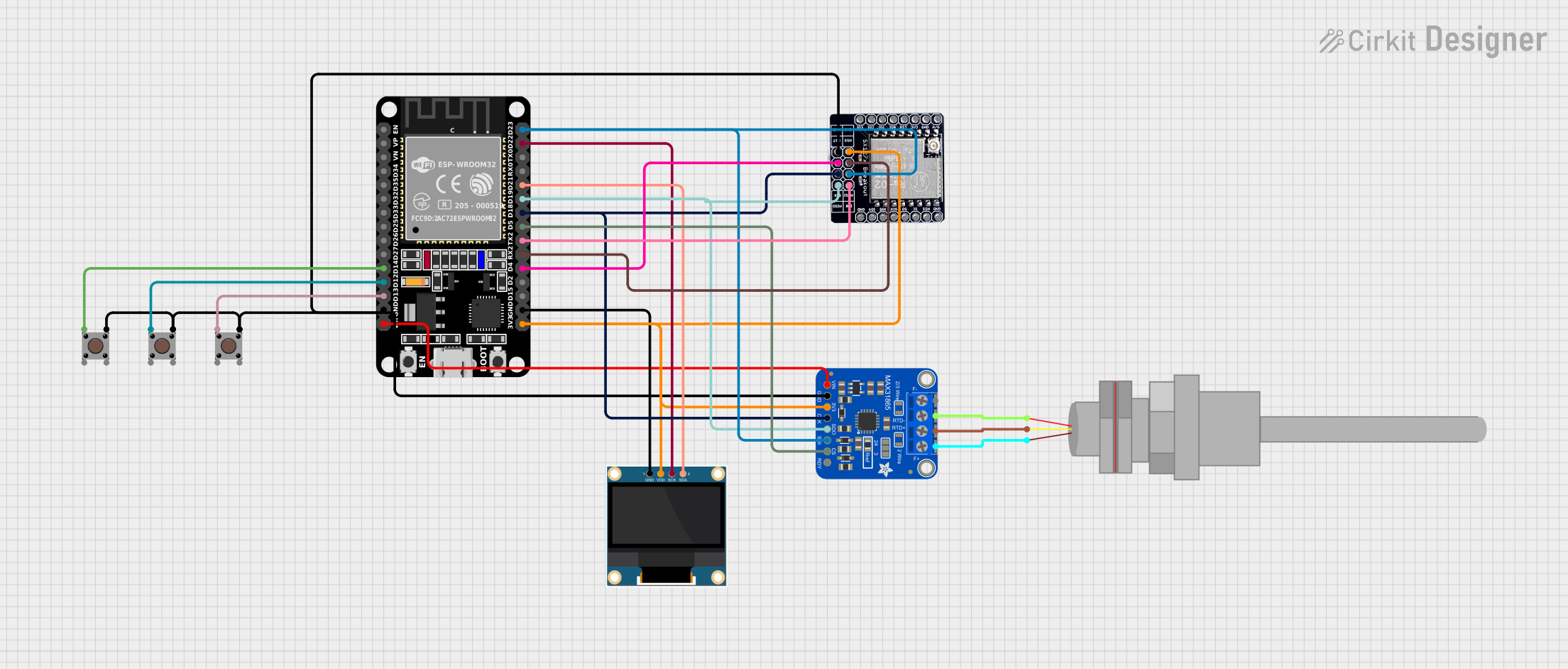
 Open Project in Cirkit Designer
Open Project in Cirkit DesignerExplore Projects Built with TECNOULAB MAX31865 RTD Platinum Resistance Temperature Detector Module PT100 - PT1000

 Open Project in Cirkit Designer
Open Project in Cirkit Designer
 Open Project in Cirkit Designer
Open Project in Cirkit Designer
 Open Project in Cirkit Designer
Open Project in Cirkit Designer
 Open Project in Cirkit Designer
Open Project in Cirkit DesignerCommon Applications
- Industrial process control and monitoring
- Laboratory temperature measurement
- Environmental monitoring systems
- HVAC systems
- IoT temperature sensing applications
Technical Specifications
Key Technical Details
- Chipset: MAX31865
- Supported RTD Types: PT100, PT1000
- RTD Configuration: 2-wire, 3-wire, or 4-wire
- Input Voltage: 3.3V or 5V (logic level compatible)
- Communication Protocol: SPI (Serial Peripheral Interface)
- Temperature Range: -200°C to +850°C (dependent on RTD type)
- Accuracy: ±0.1°C (typical, depending on RTD and calibration)
- Operating Current: ~5mA
- Dimensions: 33mm x 20mm (approx.)
Pin Configuration and Descriptions
The TECNOULAB MAX31865 module has the following pinout:
| Pin Name | Description |
|---|---|
| VCC | Power supply input (3.3V or 5V, depending on the logic level of your system). |
| GND | Ground connection. |
| SDO/MISO | SPI data output (Master In Slave Out). |
| SDI/MOSI | SPI data input (Master Out Slave In). |
| SCK | SPI clock input. |
| CS | Chip select (active low, used to enable communication with the module). |
| RTD+ | Positive terminal for the RTD sensor. |
| RTD- | Negative terminal for the RTD sensor. |
| RTD_REF+ | Reference resistor positive terminal (used internally for RTD measurement). |
| RTD_REF- | Reference resistor negative terminal (used internally for RTD measurement). |
Usage Instructions
How to Use the Component in a Circuit
- Power the Module: Connect the VCC pin to a 3.3V or 5V power source and the GND pin to the ground of your circuit.
- Connect the RTD Sensor: Attach the RTD sensor (PT100 or PT1000) to the RTD+ and RTD- pins. For 3-wire or 4-wire RTDs, refer to the module's datasheet for proper wiring.
- SPI Communication: Connect the SDO, SDI, SCK, and CS pins to the corresponding SPI pins on your microcontroller or development board.
- Reference Resistor: Ensure the module's onboard reference resistor matches the RTD type (typically 430Ω for PT100 or 2kΩ for PT1000).
- Software Configuration: Use an appropriate library or write custom SPI code to communicate with the MAX31865 chip and read temperature data.
Important Considerations and Best Practices
- RTD Type Selection: Ensure the module is configured for the correct RTD type (PT100 or PT1000). This is typically done via solder jumpers on the PCB.
- Wiring Length: Minimize the length of RTD sensor wires to reduce noise and resistance errors.
- Shielding: Use shielded cables for RTD connections in noisy environments to improve signal integrity.
- Calibration: For high-accuracy applications, calibrate the system using a known temperature reference.
- Power Supply: Use a stable and noise-free power supply to ensure accurate readings.
Example Code for Arduino UNO
Below is an example of how to use the TECNOULAB MAX31865 module with an Arduino UNO. This code uses the Adafruit MAX31865 library.
#include <Adafruit_MAX31865.h>
// Define SPI pins for the MAX31865 module
#define MAX31865_CS 10 // Chip select pin
#define MAX31865_MOSI 11 // Master Out Slave In
#define MAX31865_MISO 12 // Master In Slave Out
#define MAX31865_SCK 13 // SPI clock
// Create an instance of the MAX31865 class
// Parameters: CS pin, RTD type (PT100 or PT1000)
Adafruit_MAX31865 max31865(MAX31865_CS);
// Setup function
void setup() {
Serial.begin(9600); // Initialize serial communication
Serial.println("MAX31865 RTD Module Test");
// Initialize the MAX31865 module
if (!max31865.begin(MAX31865_3WIRE)) {
// MAX31865_3WIRE is used for 3-wire RTDs; change to MAX31865_2WIRE or
// MAX31865_4WIRE for other configurations.
Serial.println("Failed to initialize MAX31865. Check connections!");
while (1); // Halt execution if initialization fails
}
}
// Loop function
void loop() {
// Read temperature in Celsius
float temperature = max31865.temperature(100.0, 430.0);
// Parameters: RTD nominal resistance (100Ω for PT100) and reference resistor
// value (430Ω for PT100).
// Print the temperature to the serial monitor
Serial.print("Temperature: ");
Serial.print(temperature);
Serial.println(" °C");
delay(1000); // Wait 1 second before the next reading
}
Troubleshooting and FAQs
Common Issues and Solutions
No Temperature Reading:
- Cause: Incorrect wiring or loose connections.
- Solution: Double-check all connections, especially the RTD and SPI pins.
Inaccurate Temperature Readings:
- Cause: Incorrect RTD type configuration or reference resistor mismatch.
- Solution: Verify the RTD type (PT100/PT1000) and ensure the onboard reference resistor is appropriate.
Module Not Responding:
- Cause: SPI communication issue.
- Solution: Ensure the SPI pins are correctly connected and the CS pin is properly configured in the code.
High Noise in Readings:
- Cause: Long RTD wires or noisy environment.
- Solution: Use shielded cables and minimize wire length. Add decoupling capacitors if necessary.
FAQs
Can I use this module with a 2-wire RTD? Yes, but 2-wire RTDs are less accurate due to lead resistance. For better accuracy, use 3-wire or 4-wire RTDs.
What is the maximum cable length for the RTD sensor? The maximum length depends on the environment and cable type. Shielded cables can reduce noise and allow longer runs.
Can I use this module with a 3.3V microcontroller? Yes, the module is compatible with both 3.3V and 5V logic levels.
How do I change the RTD type (PT100/PT1000)? Adjust the solder jumpers on the module's PCB as per the manufacturer's instructions.
This documentation provides a comprehensive guide to using the TECNOULAB MAX31865 RTD module for accurate temperature measurement.